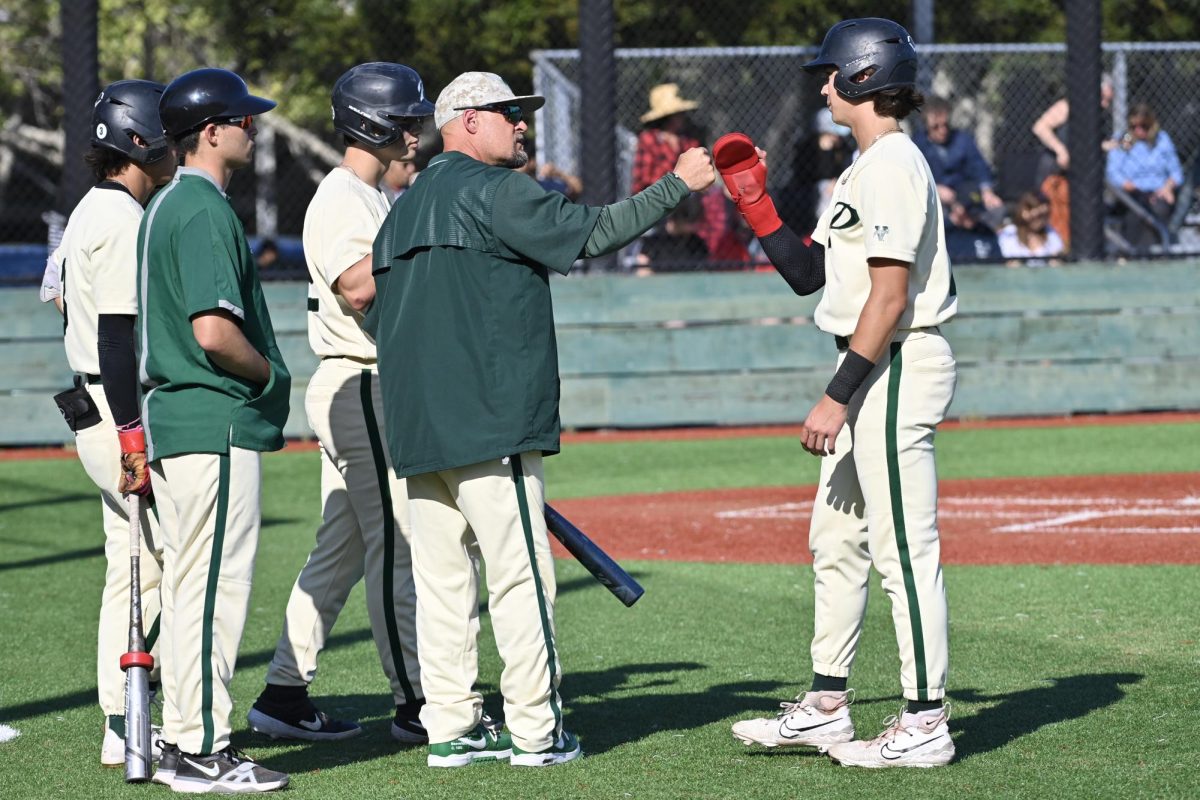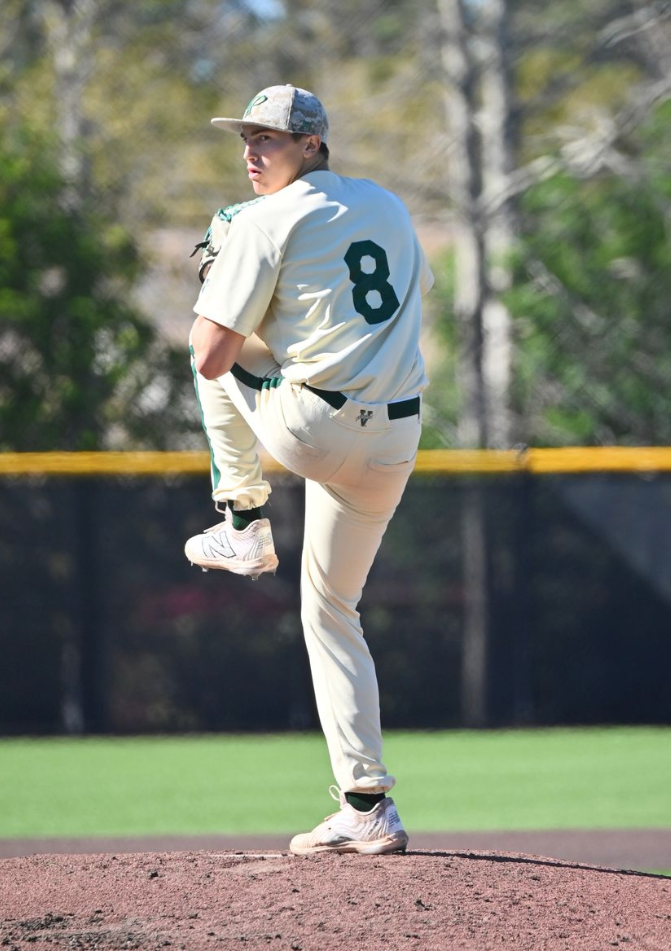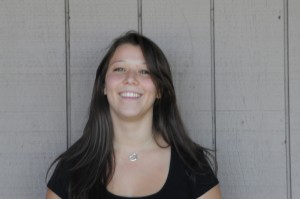A three-point basket at the buzzer was not enough to raise the spirits of the heartbroken Palo Alto High School Vikings. As the Archbishop Mitty boys’ varsity basketball team began to take the lead over Paly, the possibility of a Central Coast Section (CCS) title for the Vikings slipped away. Sweat pouring down their faces, the boys fought for every point on the scoreboard in the crowded Foothill College gym on Mar. 2, 2010.
“We were down by 11 or 12, and then they had a fast break and [Aaron Gordon (’13)] just dunked and that took the air out of our balloon,” point guard Brendon Rider (’10) said.
At the end, the Vikings’ defense was not strong enough, their offense did not function properly and all their hard work over the four-month season seemed to dissolve away. The time ticked down and though Paly had just scored, the buzzer was just another reminder of defeat. 62-39 severed as a reminder as faces dropped and tears fell. Despite a league championship, the Viking’s season ended on the diminished hope for a CCS championship. But, what the entire CCS experience depended on was a mathematical equation that brought Paly into the 2010
semifinals.
The CCS is a part of the California Interscholastic Federation, (CIF) which hosts 13 different sections, including CCS, throughout the state of California. One hundred thirty eight schools are eligible to participate CCS in 23 sports, ranging from football to field hockey to golf.
In some high school sports programs, including Paly’s, making the playoffs is not computed by a series of multiplication problems, but rather by votes, coin tosses and rankings. Wrestling follows this trend, but diverges as individuals make it to CCS by match records, the opinions of the appointed team representatives and other qualifications. For volleyball, soccer, basketball and football teams, CCS qualification is based on a season’s wins, losses and the occasional ties that are calculated, and determine their postseason seedings. Once the equation is tallied up, there are no disputes about getting to CCS. Either a team makes it or not. No controversy.
“The CCS Soccer committee is largely satisfied with their point system,” CCS Commissioner Nancy Blaser said. “It makes for an objective way to select at-large teams and also an objective way, based on actual wins and losses, to seed the teams in the tournament.
The seeding equation used for football, soccer, basketball, volleyball and baseball consists of different rankings for each league and each team. Every two years, leagues’ rankings are put through a test. The more teams that qualify for CCS and the higher they place, the better a league is ranked. In the end, leagues are classified as either A, B or C, A being the highest rank. The lower the league, the fewer points rewarded for a team’s wins, losses and league championship titles, ultimately making it harder for teams in lower ranked leagues to qualify for CCS.
Although teams get judged by their league rankings, they still play teams from other leagues and receive the appropriate amount of points for beating, losing or tying with an A, B or C league team. This allows lower ranked teams to earn more points, therefore giving them a better change to qualify. For more specific details on the seeding equation check out the chart.
The Paly girls’ varsity soccer team ranks as an A team because of its position in the De Anza Santa Clara Valley Athletic League, SCVAL. According to the equation for seeding and its A league status, the team narrowly made CCS this year when it advanced to the playoffs, despite the fact that its score was less than the score of the Menlo Atherton (M-A) soccer team. To see exact qualifying numbers of the Paly, Carlmont and M-A teams, look at the chart.
“Since Carlmont and Paly were tied, they had to both go in together,” Blaser said. “That was not the case this year. There were two spots and so both teams with 41 points got in. [They] filled the total number of teams allowed in the playoffs, so M-A did not get in.”
M-A players expressed their disappointment that they missed qualifying for CCS and were penalized because of PAL’s bylaws.
“We were all pretty disappointed, especially knowing that we had more CCS points than both Carlmont and Paly,” M-A head coach Paul Snow said. “However, Carlmont beat us in league, so they had to make playoffs before we were considered [because of] our league bylaws. So, Carlmont and Paly both went, and we didn’t.”
Snow’s reaction reflected his players’ disappointment and discontent with not advancing into the playoffs. The girls expected to advance into the playoffs because they were confident in their 6-7-1 record.
“I was devastated because I really had a gut feeling we were going to make it,” M-A captain Mallory Stevens (’10) said. “I think we could have gone far in CCS, everyone wanted to go, and we were just unlucky. I personally can only reiterate the fact that we had an incredible season, and we should all be proud.”
On the flip side, the Paly girls were relieved and thankful for the opportunity to make it not only into CCS, but to the second round. Paly went on to beat Watsonville 4-0, but failed to beat Woodside. The Wildcats scored in the closing minutes of the second half to end, ahead of Paly.
“It was really nice to make it to CCS,” Paly’s captain and forward Maeve Stewart (’10) said. “I knew that we didn’t have the best chance to make it this year, but we crossed our fingers, and thankfully we made it.”
Unlike the M-A girls, the Lady Vikes were unaware of any controversy of their team being seeded.
“I honestly had no idea there was any controversy behind us making it,” Stewart said. “I’m not really sure how the CCS policy works, but it seems to be quite bizarre. A lot of the time, seeding doesn’t reflect on who the best team is.”
Football is calculated by an equation, similar to soccer. After CCS points are tallied, some teams automatically advance to the playoffs. For the De Anza league, which Paly plays in, the top three teams move on to the playoffs according to their points and school size.
“One thing about football is it’s very objective,” athletic director and varsity football head coach Earl Hansen said. “There’s no sitting down and discussing ‘my team’s better than yours’ and arguing about it. There are no arguments. Everything’s up. You have to have a system that’s as fair as possible.”‘
Paly football had a high seed as the league champion of SCVAL De Anza. Coming into the playoffs 7-2-1, Paly was the third seed and set to play Bellarmine College Preparatory (8-2-1 before playoffs) who was seeded sixth out of eight teams at Paly. After a scoreless first quarter in the first round, Bellarmine scored a touchdown with 8:51 left in the second quarter, then failed to get the extra point after 12 plays. On the ensuing kickoff, Paly fumbled and gave possession right back to the Bells. On the next play, Bellarmine scored again, pushing the score to 13-0. On the next possession, quarterback T.J. Braff (’11) sent a soaring ball to receiver Joc Pederson (’10) to make the score 13-6. At halftime the score was 20-6– Paly with 13 rushing yards compared to Bellarmine’s 198.
The Bells scored just three plays after halftime. On offense, Braff got sacked a total of six times throughout the game. After scoring the last touchdown of the game, the Bells ended the game with a final score of 34
“We ended up winning it, so I guess [the seeding] worked out pretty well for us,” Bellarmine head coach Mike Janda said. “In the Open Division, every team is good. [Seeding is] just formulaic because you need some kind of formula and that’s the one they use. It doesn’t give too much of an advantage to any one team.”
Regardless of seeding, a team’s location in a bracket can Make the playoff schedule either easier or harder for some teams. In this case, Paly faced off against Bellarmine, the winner of the Open Division, in the first round, challenging for the Vikings and increasing the level of difficulty for Paly to advance.
“[Seeding] can be very important,” Hansen said. “In football this year, we got a three seed and we played Bellarmine, a six seed, which is not a great draw. It’s all points, but seeding can make a huge difference.”
The CCS administration sees seeding as an estimate of the team that “should win” based on previous wins and losses.
“The purpose of seeding is to try and separate the top few teams so that they do not meet in an early round,” Commissioner Blaser said. “It is an attempt to try and give the top two teams the best chance to meet in the finals If seeding was perfect, we would not need to bother to play the games at all.”
Wrestling is unlike any high school sport regarding CCS seeding. First, there is only one CCS division and no league classification. There is also only one CCS champion for each weight class, without division champions. A more subjective system is put in place to advance teams to the playoffs. Representatives from each league are appointed to attend a seeding meeting. The representatives, including Paly’s own David Duran for SCVAL, decide who from their league they want to put up for seeding. Once a wrestler from every league is included for consideration, seeding begins. The first criteria to seed a wrestler is his head to hear victories against any of the other considered wrestlers.
In wrestling, seeding can determine the difficulty of an individual’s opponents. The higher a wrestler is seeded, the lower his or hers competitor’s seed. Joe Buckley (’10), a 154 pound wrestler from Los Altos, discovered this when he received the fifth CCS seed, one behind Paly wrestler, Max Simon. Simon got the fourth seed despite losing to Buckley. At the league championship in February, Buckley and Simon faced off in the first round. Buckley had a seven-point lead when he pinned Simon in the second period. Buckley went on to place second overall after losing to Cupertino wrestler, Gurmukh Singh (’10), in quadruple overtime. Simon won the consolation championship and placed third overall.
“First of all, there’s a lot of planning, before you get to [the seeding meeting],” Duran said. “The one thing is that people don’t get that much because you can only put one person on the board at a time from your league and that’s all. You try to put [your better wrestlers] up first, but if they’re not going to get seeded because they don’t meet any criteria, you can’t put them up: it’s a waste of time.”
Next, previous league or CCS titles are accounted for. If the seed still hasn’t been picked, the representatives look at common opponents between the wrestlers, tournament placing and overall record to differentiate each. If the representatives still cannot decide, the seeding comes down to a vote and if there still is not a winner, they flip a coin.
“Sometimes you weed it down, but sometimes it goes down to a vote,” Duran said. “If somebody puts someone up from a league and we know we’ve beaten him, and maybe it’s not the best guy in our league, sometimes we’ll put that guy up just because we know he can take that seed.”
This seemed to be the case for Buckley and Simon. Despite Buckley’s victory over Simon, he was seeded 5th, one behind Simon.
“They don’t always get seeding right,” Simon said who was unable to attend the CCS tournament due to illness. “Seeding doesn’t really mean anything in wrestling because anything can happen. All it takes is one mistake and you can end up on your back: pinned.”
Head coaches hold responsibility for getting their wrestlers’ information to the representatives, who then, presumably fairly, decide who to put up for each seed. Every two years the league rankings are re-decided, therefore it is very important that as many wrestlers as possible, for each league, advance to improve a league’s status. A representative has the responsibility to be fair and honest when picking wrestlers, without being biased towards their own school, but rather to have the league in mind.
“Representatives do favor their own league, but I don’t think they favor their own school,” Duran said. “[The other coaches in our league] are suppose to give us all their data, and then we meet at after the league tournament. They give us the information and we go from there. Not all the coaches are the best at getting you information.”
Seeding is only one part of the playoff equation. Predictions do not always stay true and games are not played on paper. At every level of competing, teams and individuals get ranked, but this process is commonly misunderstood. In CCS, teams get seeded according to the difficulty and success of their leagues, overall records and league titles. Although this might not be the definition of success, the CCS administration categorizes a team’s season based on a mathematical, predetermined equation, which determines a team’s placement in the postseason. It all comes down to one sack, one point, one pin and one second, all of which can make or break a team or an individual.
“If seeding was perfect, we would not need to bother to play the games at all,” Blaser said. “This makes coaches more comfortable and less worried that human bias, lack of knowledge, or favoritism, will impact their team negatively in at-large and seeding.”






